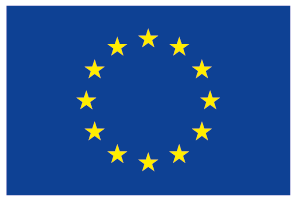Approach
Methodology
Use Case Requirements
The approach used to develop and describe the use cases builds on the methodology of storytelling.Since this deliverable sets up the scene for business requirements for business and IT alignment, the requirements should be presented in a form that is easily understandable for all stakeholders. Basically a story consists of the following main elements: actors, starting situation, transformation and end situation. The starting and end situation, as the name already implies, describe under which circumstances the story begins and how it ends. It is important to note that in this document the initial situation is an anonymised real case, whereas the end situation is an envisioned scenario which may exist in the future. The transformation stands for events that occur in between.

The concept of storytelling has been applied and adapted for the purpose of CloudSocket (see Figure 2). A business episode (=story) gives a brief overview of the starting situation and first indications, which represent in this case the end situation, of how cloud services could support the enterprise. Then it is described how the enterprise deals with the situation now -means without cloud service support- using the concept of different scenes - transformation. In addition, each scene refers to potential business processes that might be supported with cloud offerings. The business episodes and scenarios are based on true stories as they occur in start-ups. However, the stories have been extended to emphasize typical situations relevant for CloudSocket. The real names of the companies and actors are anonymized.
Development of Business Process as a Service Repository
The goal of the second phase is to build a business process as a Service repository with an initial set of pre-defined business processes. These process collections represent variants of typical processes of an enterprise with different levels of cloud computing support. In order to manage the process repository a structure is required, which consists of different abstraction layers and serves as a guiding principle to classify the processes. Initially it has been examined from which perspective to derive this structure. Different influencing factors form the starting point of process identification from business perspective, such as competitive strategy, the services and products, customer segments, customer requirements and the business model.
Processes are examined from various perspectives following the guiding principle that "the quality of a model is higher the better it serves the purpose of use from the viewpoint of the user" (Becker et al., 2003). Hence the top level hierarchy should be developed with respect to the intended use and purpose of the process repository. In order to structure the process repository we examined several approaches and frameworks, in particular Porter's value chain, the APQC's process classification framework (PCF) and the Business Model Canvas from Osterwalder & Pigneur (2010). The process repository should be general enough to be used for any enterprise but also support a specific enterprise to identify and organize the appropriate processes. Based on a general analysis and in consultation with the use case partners we developed a four layer structure with APQC's PCF first three layers and process variants on the fourth layer. Additionally we use the Business Model Canvas as an entry portal, supporting a mapping from the business model elements to processes and process groups of the PCF. Details auf the structure and the rationale are described in section 4.1. Figure 3 summarizes the methodology used to develop the CloudSocket business process repository. The repository has been developed using the ADONIS® toolkit.



